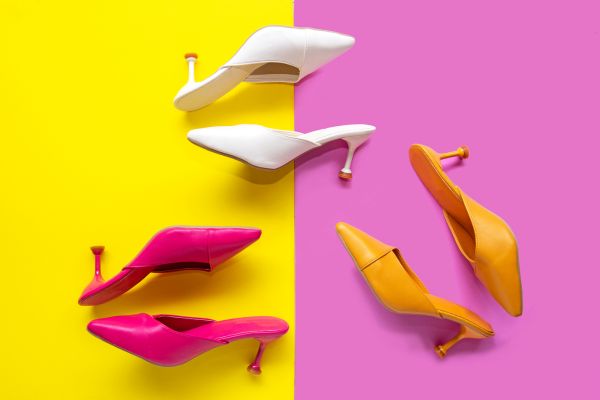Fashion is everywhere—on our Instagram feeds, in the mall, and even in the ads that chase us online. But the conversation has shifted in recent years. People aren’t just asking what’s trendy; they’re also asking what’s sustainable. That’s where the debate of fast fashion vs slow fashion comes in. If you’ve ever wondered why these two approaches stir so much buzz, let’s break it down in plain English.
What Is Fast Fashion?
Fast fashion is all about speed. Think of it as the fast food version of clothing. Brands design, produce, and push new collections out at lightning pace—sometimes every few weeks. The goal? To copy runway trends and make them available at cheap prices.
The catch is, this model thrives on quantity over quality. Fabrics might not last more than a season, and many garments end up in landfills before they’ve even been worn a handful of times. But hey, for shoppers who want the latest look without dropping a fortune, fast fashion has been a tempting choice.
What Is Slow Fashion?
On the flip side, slow fashion is the mindful sibling in this rivalry. It emphasizes durability, ethical production, and thoughtful consumption. Instead of pushing out dozens of styles every month, slow fashion brands create fewer collections with better quality materials.
It’s not just about buying clothes—it’s about respecting the people who make them, the resources used, and the planet. Slow fashion often comes with a higher price tag, but the idea is that you’ll buy less, use what you have longer, and reduce waste in the process.
Fast Fashion vs Slow Fashion: The Environmental Impact
Here’s the thing—clothing production has a massive environmental footprint. Fast fashion factories often rely on cheap labor and low-cost materials, which means more polyester, more water usage, and tons of chemical dyes ending up in rivers. Not exactly eco-friendly.
Slow fashion, on the other hand, leans toward natural fibers, organic cotton, or recycled materials. The production process is slower, yes, but it also creates less waste. Imagine buying one high-quality sweater you’ll wear for five winters instead of five trendy sweaters that fall apart after a wash. That’s the real difference.
The Human Side of the Story
Let’s be real: cheap clothing often comes at a cost that isn’t visible on the price tag. Fast fashion has long been criticized for poor working conditions, underpaid labor, and unsafe factories. When you’re paying $10 for a dress, someone down the line is absorbing the hidden cost.
Slow fashion shifts the focus back to people. Many slow fashion brands are transparent about their supply chains. They prioritize fair wages, safe environments, and ethical practices. For shoppers who care about where their money goes, this makes a big difference.
Style and Longevity
Trends fade quickly—sometimes in the blink of an eye. Fast fashion is built for this cycle, encouraging consumers to buy new pieces constantly. The problem? Your wardrobe might end up full of items that feel “out of style” within months.
Slow fashion doesn’t chase trends; it’s more about timeless pieces. Classic denim, sturdy boots, a well-tailored coat—things you’ll still be proud to wear five years from now. You save closet space, and honestly, you’ll probably end up with a style that feels more you.
Cost: Cheap vs. Investment
This is usually the biggest sticking point in the fast fashion vs slow fashion debate. Fast fashion is cheap upfront, but the clothes wear out quickly. That means you keep spending money on replacements.
Slow fashion, though pricier, can be seen as an investment. If you spend $150 on a high-quality jacket that lasts for years, it’s often more cost-effective than replacing a $40 jacket every winter. It’s that classic “buy cheap, buy twice” situation.
The Emotional Factor
There’s something kind of satisfying about slow fashion. When you buy a handcrafted piece, you feel a stronger connection to it. It’s not just another t-shirt; it’s something you took the time to choose carefully. And because it lasts, it becomes part of your personal story.
Fast fashion, in contrast, often feels disposable. You might enjoy the thrill of a quick buy, but the excitement fades once the clothes lose shape or color. It’s a short-term rush versus long-term value.
The Future of Fashion
So where are we headed? Truth is, it’s not black and white. Fast fashion is still booming, but awareness about its consequences is spreading. Younger shoppers, especially Gen Z, are pushing for transparency and sustainability. Meanwhile, resale platforms, thrift stores, and clothing rental services are bridging the gap between affordability and sustainability.
Slow fashion might not take over overnight, but it’s definitely growing. As consumers become more mindful, the industry is being forced to adapt. Even some fast fashion giants are experimenting with recycled fabrics and eco-conscious lines—though critics argue it’s often just greenwashing.
Making a Choice as a Consumer
At the end of the day, the debate of fast fashion vs slow fashion circles back to us—the buyers. No one’s saying you need to ditch your favorite affordable brand tomorrow. But small changes, like buying less, re-wearing what you own, or mixing thrift finds with new staples, can make a big difference.
Fashion doesn’t have to be wasteful to be fun. When you’re thoughtful about your purchases, you not only save money in the long run but also contribute to a healthier planet.
Conclusion
The fast fashion vs slow fashion conversation isn’t just about clothes—it’s about values, lifestyle, and the future we want to create. Fast fashion gives us instant gratification, while slow fashion asks us to slow down and think bigger. One is about constant turnover; the other is about longevity and meaning.
So next time you’re eyeing that $15 top online, pause for a moment. Ask yourself: is this a quick thrill, or do I want something that’ll last and actually matter? The answer might just change not only your wardrobe but the way you look at fashion altogether.
